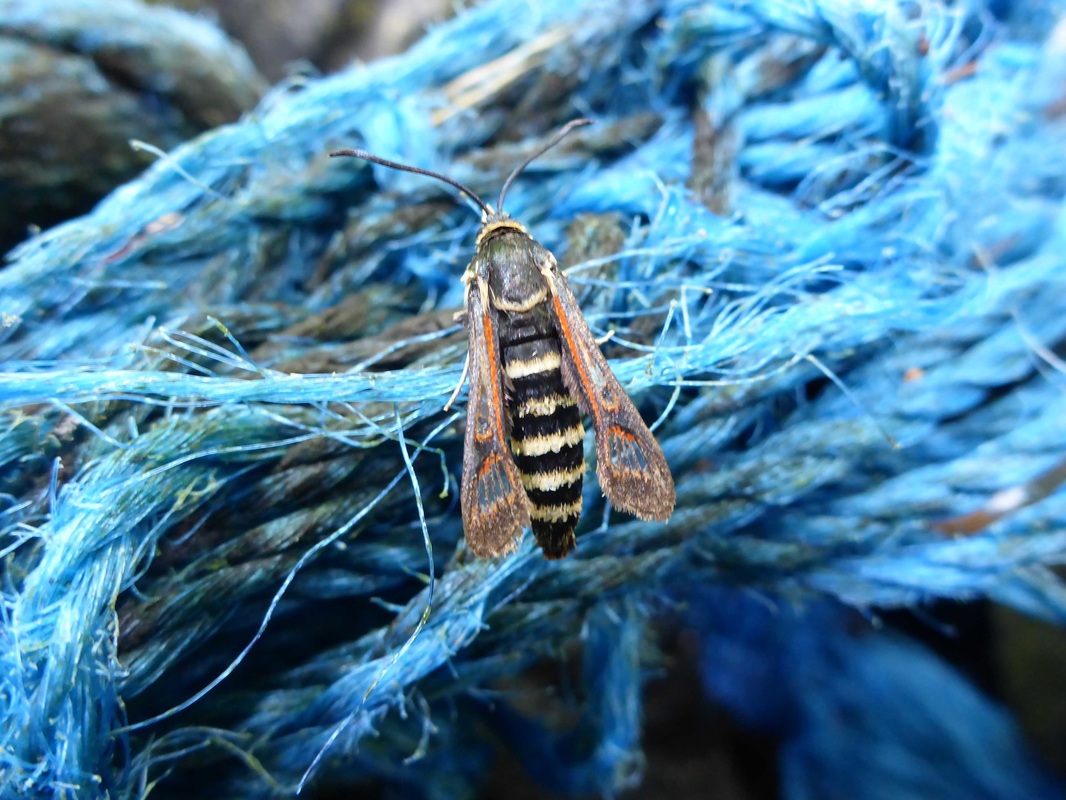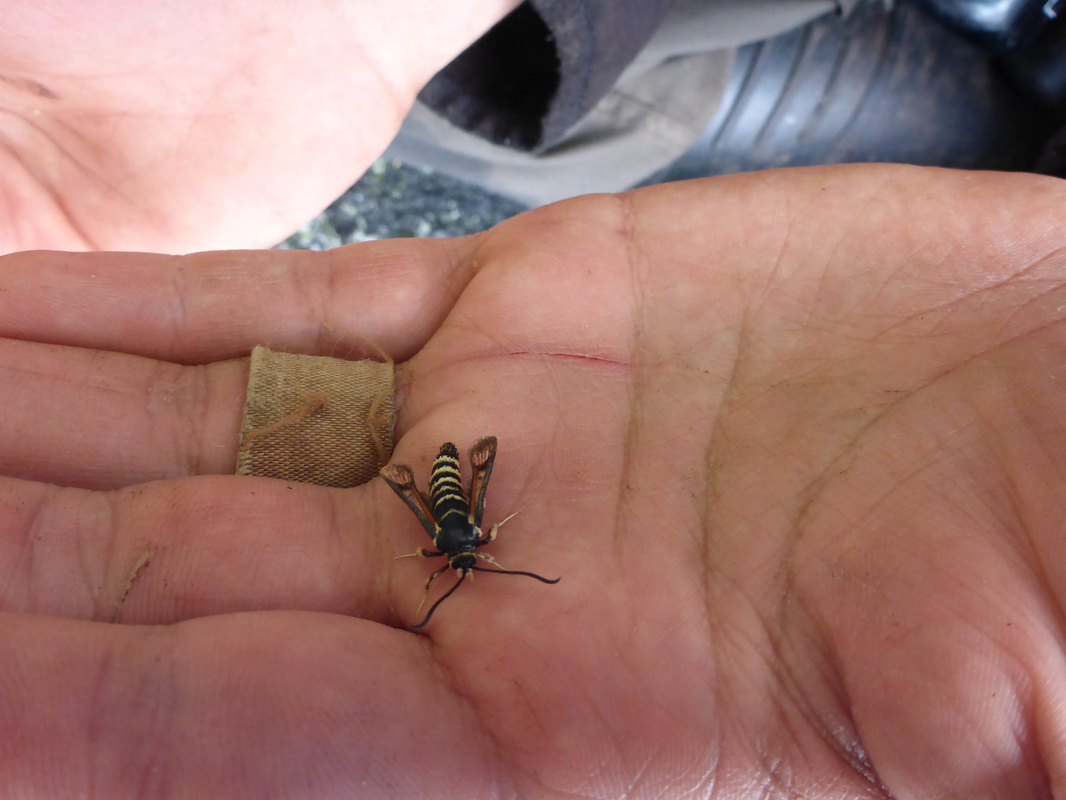Fireweed clearwing moth • Albuna pyramidalis
Identification
Like many others in the clearwing moth family (Sesiidae), the fireweed clearing moth has a wasp-like appearance and its narrow, elongated wings are largely transparent — hence the name 'clearwing'. The main identifying feature of this species is the wide discal band found on the forewings: this feature is bordered with orange on the specimen pictured above. This species exhibits multiple colour forms, including an all black body. Click here for more images.
Habitat & Range
The larvae of this commonly collected species bore into and eat the main roots of Epilobium (such as fireweed, E. angustifolium) and Oenothera (primrose) species, and may tunnel as far as 60 cm deep. Adults, which are present during spring and summer, are attracted to flowers: the males hover over flowers, while the heavier females rest on the flowers and leaves. This species is found across North America, including the Rocky Mountains and Pacific Mountain ranges.
Like many others in the clearwing moth family (Sesiidae), the fireweed clearing moth has a wasp-like appearance and its narrow, elongated wings are largely transparent — hence the name 'clearwing'. The main identifying feature of this species is the wide discal band found on the forewings: this feature is bordered with orange on the specimen pictured above. This species exhibits multiple colour forms, including an all black body. Click here for more images.
Habitat & Range
The larvae of this commonly collected species bore into and eat the main roots of Epilobium (such as fireweed, E. angustifolium) and Oenothera (primrose) species, and may tunnel as far as 60 cm deep. Adults, which are present during spring and summer, are attracted to flowers: the males hover over flowers, while the heavier females rest on the flowers and leaves. This species is found across North America, including the Rocky Mountains and Pacific Mountain ranges.
References
Fireweed Clearwing Moth Albuna pyramidalis (Walker, 1856). Butterflies and Moths of North America. Accessed 05/07/2016.
Species Albuna pyramidalis - Fireweed Clearwing Moth - Hodges#2533. BugGuide. Iowa State University Department of Entomology. Accessed 05/07/2016.
Authors and editors of page
Kelly Fretwell (2016).
Fireweed Clearwing Moth Albuna pyramidalis (Walker, 1856). Butterflies and Moths of North America. Accessed 05/07/2016.
Species Albuna pyramidalis - Fireweed Clearwing Moth - Hodges#2533. BugGuide. Iowa State University Department of Entomology. Accessed 05/07/2016.
Authors and editors of page
Kelly Fretwell (2016).





